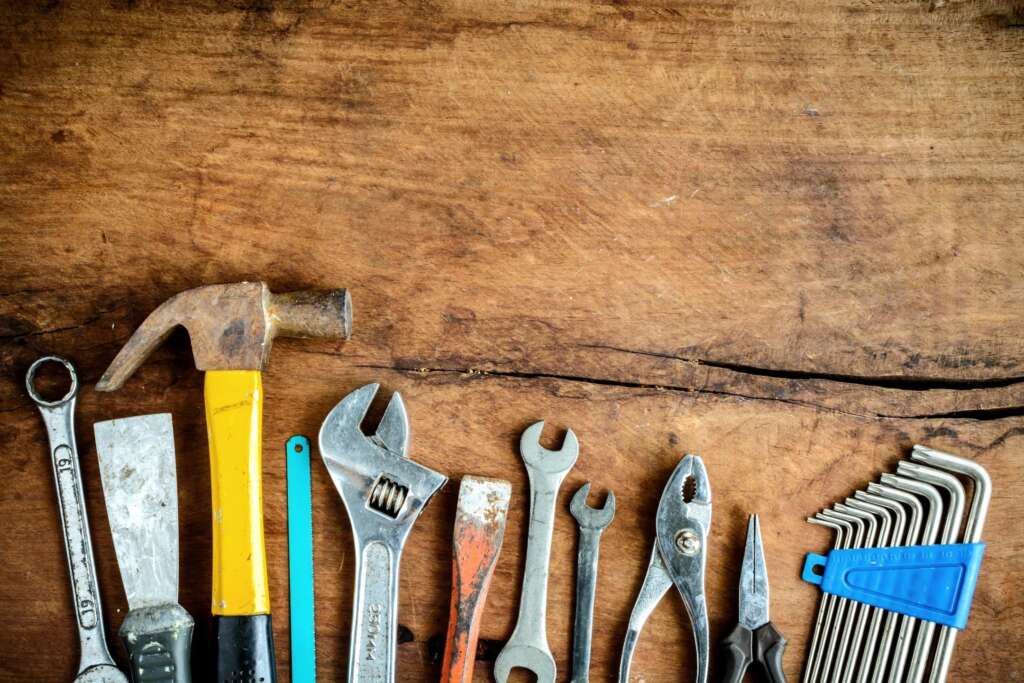
Different Project Ideas when you are stuck at home
Being stuck at home can do different things to different people (insert nervous face emoji here). One of the more productive ways to cope with quarantine is to improve the environment you are in. However, in this unique situation, many people have already experienced pay cuts, job loss or are preparing for more financial hardships. So how do you make improvements on a budget? Where do you start? What brings you the most RIO when it comes to updates?
According to MoneyCrashers.com here are 7 ways to increase your home value.
https://www.moneycrashers.com/7-home-improvements-to-increase-its-value/
7 Home Improvement & Remodeling Ideas that Increase Home Value (And What to Avoid)
A lot home improvement projects don’t add value to your home. In fact, some improvements can even detract from the asking price when you decide to sell. On the other hand, some projects can add significant value to your home.
So which home improvement projects should you invest in, and which projects should you avoid? Below are some helpful tips for home improvement projects that increase the value of your home, and home improvement projects to avoid altogether.
7 Projects That Add Value to Your Home
Many projects do add value to your home, and improve your family’s quality of life. By working on these projects now, you can enjoy the benefits and updates. If you make green upgrades, then you can also start recouping your investment in these green energy technologies once you complete the projects.
Some home improvement projects that add value to a home include:
1. Remodeling the Kitchen
Most people consider the kitchen to be the heart of the home, and because of this, updates in this room pay off. According to HGTV, you can expect to recoup 60%-120% of your investment on a kitchen remodel, as long as you don’t go overboard.
A Little Paint Goes a Long Way
When it comes to how much you spend on a kitchen remodel, prices can run the gamut, from $5,000 to $75,000, or more. Get the biggest bang for your buck on a kitchen remodel by looking at color. Fresh paint, in modern colors, can go a long way towards updating the look of your kitchen.
Energy-Efficient Appliances
Replace old appliances with energy-efficient models. Energy Star-rated appliances are better for the environment, and they also help you save money, because they use less energy. Potential buyers often look for ways to save money when shopping for a new home.
2. Bathroom Addition
If your home only has one bathroom, you can recoup a large chunk of your investment by adding another one. HGTV estimates that you can recoup 80%-130% of whatever you spend adding a bathroom.
When it comes to finding room in your house for an extra bathroom, take a look at any extra rooms or underutilized spaces. Consider other spaces, such as closets or areas under the stairs, too. If you want a half-bath you need at least 18 square feet. If you want a full bath, including a stand-up shower, you need at least 30 square feet. If you want a bathtub, make sure you have at least 35 square feet to work with for a bathroom addition. See these bathroom design and remodeling ideas to get you started.
3. Reinventing a Room
Adding more square footage to your home with a new room can be an incredibly expensive project. Although you can recoup some of your investment, anywhere from 50%-83%, this project’s costs can quickly spin wildly out of control. Just turn on any of those home remodeling TV shows; projects that start off with a $15,000 budget quickly turn into $30,000 or more when homeowners and contractors run into unexpected problems.
Reinvent the existing space in your home to save money. Finish a basement, or convert the attic to a bedroom. Many homeowners can also add small apartments in, or over, their garages – which they can then rent out as a room.
What about the windows?
4. Adding Energy-Efficient Windows
These days, buyers shop for homes with energy efficiency in mind. Old, drafty single-pane windows are a major turn off. Energy Star claims that adding Energy Star-rated windows can save you up to $500 a year in heating and cooling costs by making your home more energy efficient.
According to HGTV, you can expect to recoup 60%-90% of your costs when you invest in energy-efficient windows. You can also receive a green energy tax credit of 10% for this upgrade, as long as you install Energy Star-rated windows. You might also qualify for additional credits from your state, or even your utility company.
Learn more about available offers and rebates in your area by visiting the Energy Star Rebate Finder. They have a searchable database that gives you specific information for your state. Just make sure you check “windows” so you get product-specific information. I searched for energy-efficient rebates in my zip code and discovered that my utility company, DTE offers rebates to customers who install Energy Star windows.
5. Deck Addition
Adding a deck increases the value of your home. Outdoor living spaces have become more desirable, especially since more people stay home for vacation (i.e. referred to as a staycation). If you make your deck and your backyard more appealing, your house will be more appealing to prospective buyers when you decide to sell. HGTV claims that homeowners recoup 65%-90% of their investment by adding a deck.
I want to hire a contractor, but I need to shop around before I choose someone to work with. Make sure you get at least three quotes, with specifics, from the contractors you interview. Thoroughly check references for the contractors before you agree to a contract or work order, and watch out for home improvement repair scams. Sites like HomeAdvisor or Angie’s List can ensure you hire a contractor you can trust.
6. Energy-Efficient Insulation
When your home lacks basic insulation, and has old doors that let in plenty of hot and cold air, home inspectors working with potential buyers will include this in their reports. Homes that haven’t been modified with energy efficiency in mind cost more to live in and maintain.
Updating your home to save energy doesn’t have to cost a lot of money and can make your home more appealing to potential buyers. You can save $2,500 or more each year just by making some changes. For example, you can add extra insulation to your attic for $200 or less, and this small change can save you hundreds each year on your utility bill.
Seal cracks around the house to save even more money on energy costs, and to make your home more appealing to buyers. The U.S. Department of Energy (USDE) estimates that the average house has enough leaks to equal a 3×3 foot hole in the wall. You can find leaks in your home during the winter. Anytime you feel a draft or cold spot, you’re in an area that leaks air.
Upgrade Features
Another easy retrofit is to use CFL light bulbs in all light fixtures. CFL bulbs use 75% less energy than traditional bulbs and each one saves, on average, $40 in energy over the course of its lifetime. You also save on cooling costs because CFLs emit 75% less heat than traditional bulbs.
You can also install a programmable thermostat. Energy Star estimates that installing a programmable thermostat will save the average homeowner $180 per year in heating and cooling costs.
7. Basic Updates
Basic updates add the most value to your home. Keep the paint fresh, fix the roof when it leaks, replace wood that rots, and get rid of any mold that you find. These types of chores keep your home from deteriorating over time. Buyers want a healthy, solid, safe home, and they look carefully for signs of routine maintenance.
We hope this helps. This is a stressful time for many of our clients. Don’t take on more than you can handle. One project at a time. Stay safe and healthy. https://a1aatlantic.com/
